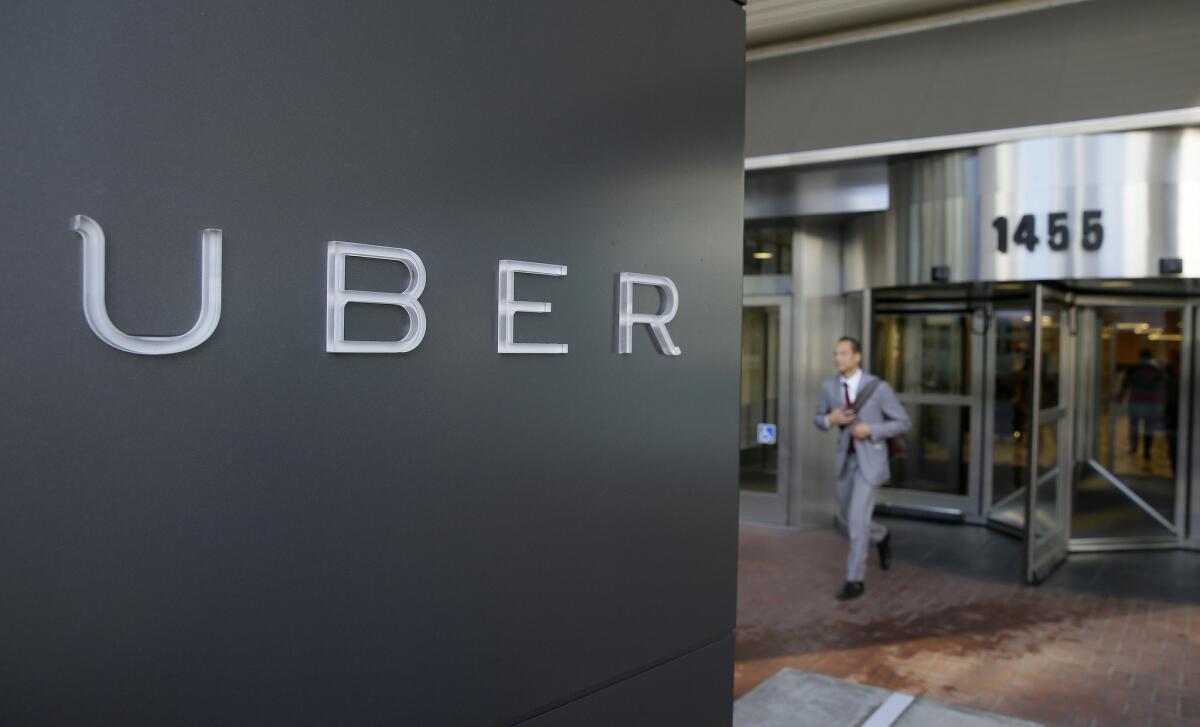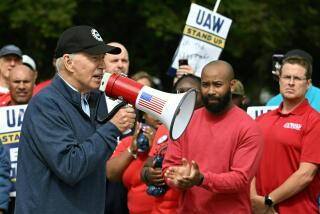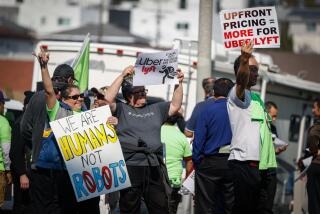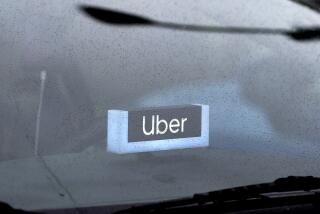The court ruling that could blow up Uber’s business model

Uber’s headquarters in San Francisco, where a judge just fired a shot into its employee-free business model.
The ride-hailing service Uber has been dancing as fast as it can to fend off a legal challenge that could upend its business model, which depends on its classifying its drivers as independent contractors rather than employees. This legal loophole allows Uber to saddle them with almost all the expenses of their work, including gas and auto maintenance, while reaping the opportunity for fairly frictionless profit.
San Francisco Federal Judge Edward M. Chen just peppered that strategy with buckshot and left it smoking by the side of the road. On Tuesday, Chen granted class action status to a lawsuit challenging the independent contractor classification and cleared it to go to trial. The case could involve as many as 160,000 drivers who worked for Uber in California after August 2009. But its implications are much greater, as Uber drivers all over the country could end up enjoying the benefits that belong to employees -- more secure jobs and fairer pay among them.
Uber says it will appeal, but Chen’s ruling is part of what’s beginning to look like a continuum. It follows a ruling in June by California labor regulators that Uber’s drivers are employees, and an emergent trend among “sharing economy” startups to give their workers employee status.
Chen cautions that he’s only deciding whether the Uber drivers constitute a “class” under federal rules, not whether the drivers should be considered employees: “The merits of the case are not currently at issue,” he writes. But that’s a little mischievous, as he then proceeds to dismantle systematically most of Uber’s arguments against treating them as employees.
He swipes aside the company’s assertion that there is “no typical Uber driver,” observing that their similarities vastly outweigh their differences. They may each set their own hours, he observes, but they’re all subject to Uber’s fare decisions, they must meet the company’s training and performance standards, they all operate their own vehicles and pay their own expenses.
He’s also dismissive of Uber’s contention that “countless drivers” are perfectly happy with their independent contractor status, and therefore that the class-action plaintiffs will be harming the very people they claim to represent. Uber submitted 400 affidavits from drivers in support of its position, but Chen notes that this was a tiny percentage of the 160,000 drivers who might be part of the class -- and only 150 of them actually stated a preference for remaining independent. He also questioned whether they represented a random sample of drivers, or if their statements weren’t carefully guided by Uber lawyers.
“There is simply no basis in the record,” Chen writes, “supporting Uber’s claim that some innumerable legion of drivers prefer to remain independent contractors.”
In any case, Chen says, there’s a public interest component of labor regulations beyond that of the drivers themselves -- companies skirting the employee rules, as the plaintiffs charge Uber is doing, may also be cheating government of tax payments and disadvantaging competitors who are following the rules.
The biggest problem Chen’s decision presents for Uber, however, is a fundamental one. At trial, the burden will be on Uber to disprove that the drivers are employees.
Uber seems inclined, at the moment, to fight the independent-contractor fight to the bitter end. The firm may even prevail in court, after a long battle, but it’s proper to ask if it will be worth the expense and effort. Yes, employees are more expensive than contractors, but a pick-up workforce comes with costs that are real, even if they’re hard to quantify. Turnover is greater. An employer’s ability to hold independent workers to its standards is weaker. It can’t order them to cover particular geographic areas or work particular hours; that may not matter in cities bustling with Uber drivers, such as San Francisco or Washington, but it may in places with less coverage.
There are signs, too, that Uber’s ability to ruthlessly exploit its drivers on pay and expenses may eventually end of its own accord. Not one of the half-dozen Uber drivers I’ve ridden with over the last couple of months was delighted with his income.
They all complained about Uber’s flooding their cities with drivers, cutting into their own income, and about their ability to keep ahead of their own expenses. A couple said they were driven out of the taxi business by Uber’s competition, only to find the competition just as fierce within Uber. That’s an unscientific survey, obviously, but the unanimity of the responses was striking.
Uber almost certainly can thrive even if it pays its drivers more, and even if it picks up their expenses and pays them benefits like a genuine employer. It won’t make as much money per trip, but its service may become more reliable instead, which could expand its market.
Its fights with regulators all over the world on a host of issues can’t be cheap, and the company could end up with the same business model after the smoke clears as pure economics would lead it to anyway. Giving up some of these fights may be the sign of Uber’s maturity that many people are waiting for.
Keep up to date with the Economy Hub. Follow @hiltzikm on Twitter, see our Facebook page, or email michael.hiltzik@latimes.com.







